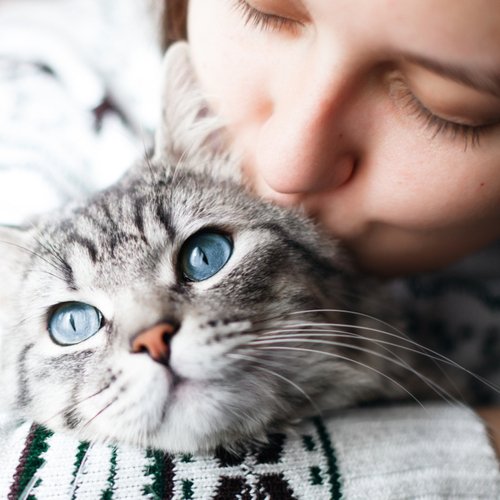Lockdowns, job losses and social isolation have been the hallmarks of 2020 as COVID-19 tightens its grip on the world, not only infecting millions and leaving a mounting death toll, but also denying humans the most basic sense – touch.
In the absence of human-to-human contact, in millions of households worldwide, animals have stepped into the breach for many people, providing much-needed comfort via cuddles, pats and a constant physical presence.
A new study published by University of South Australia researchers points to the lifesaving role that pets have played in 2020 and why governments need to sit up and take notice.
The Journal of Behavioural Economics for Policy (JBEP) paper outlines how pets have a crucial role to play in an era where human-human contact can be life endangering.
Lead author Dr Janette Young says physical touch is a sense that has been taken for granted – even overlooked – until COVID-19 visited our door earlier this year.
“In a year when human contact has been so limited and people have been deprived of touch, the health impacts on our quality of life have been enormous,” Dr Young says.
“To fill the void of loneliness and provide a buffer against stress, there has been a global upsurge in people adopting dogs and cats from animal shelters during lockdowns. Breeders have also been inundated, with demands for puppies quadrupling some waiting lists.”
Spending on pets was already hitting record levels, topping $13 billion in Australia and in the region of US$260 billion globally in 2020, but this is bound to be surpassed.
It is estimated that more than half the global population share their lives with one or more pets. The health benefits have been widely reported, but little data exists regarding the specific benefits that pets bring to humans in terms of touch.
“Pets seem to be particularly important when people are socially isolated or excluded, providing comfort, companionship and a sense of self-worth,” Dr Young says.
“Touch is an understudied sense, but existing evidence indicates it is crucial for growth, development and health, as well as reducing the levels of the stress hormone cortisol in the body. It is also thought that touch may be particularly important for older people as other senses decline.”
In interviews with 32 people, more than 90 per cent said touching their pets both comforted and relaxed them – and the pets seemed to need it as well.
Examples of dogs and cats touching their owners when the latter were distressed, sad, or traumatised were cited. Many people referenced pets’ innate ability to just “know” when their human counterparts weren’t feeling well and to want to get physically close to them.
“The feedback we received was that pets themselves seem to get just as much pleasure from the tactile interaction as humans,” Dr Young says.
Not just dogs and cats either. Interviewees mentioned birds, sheep, horses and even reptiles who reciprocate touch.
“Animals, like people, are living, breathing others, with individual interests, styles and preferences. While culturally, animals are not seen as ‘human’, they are still seen as individuals with likes and dislikes.
“In the era of COVID-19, social distancing, sudden lockdowns and societal upheaval, our pets may be the only living beings that many people are able to touch and draw comfort from.
“Humans have an innate need to connect with others but in the absence of human touch, pets are helping to fill this void. They need to be considered from a policy angle, therefore, to help mitigate some of the mental and physical stressors that people are experiencing during this time.”
Dr Young says hospitals, hospices and aged care facilities should be encouraging pet connections with residents.
“Residential aged care is yet to recognise the value of human-animal relationships. Had more pets being living with their owners in aged care when COVID-19 restrictions were applied, it could have helped people immeasurably,” she says.
